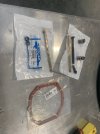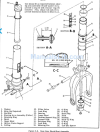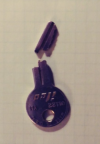Last week while using the tug to pull the plane out of the hangar and I hear a crack while in a turn. What was that? Unclamp the tug and the nut, bolt and washers fall on the ground. Oh oh ! Can’t fly it like that and I will be lucky to get it back into the hangar by myself and make a 90 degree turn. I was able to do it with just one nub sticking out of the front strut. Using a tug puts a little more stress on that part but not my back.
Ain’t gonna find a bolt like that local so I ordered online from my friend's at ACS. They have it in stock.
I am not paying big bucks for over night shipping for a 16 dollar bolt and nut. So I go for priority mail for 8 bucks.
First tracking says Tuesday delivery and then it says Monday delivery.
So I don’t look again until today and it was delivered Saturday at 11am! Oh well I missed a great day yesterday flying.
Not the first time I have received a part in under 48 hours from ACS.
Don’t you wish all aircraft repairs were so simple and inexpensive?
I ordered 2, one for next time. Or let me know if you need one in a hurry.
 I already had the valve cover gasket in stock, it goes on next oil change.
I already had the valve cover gasket in stock, it goes on next oil change.
Ain’t gonna find a bolt like that local so I ordered online from my friend's at ACS. They have it in stock.
I am not paying big bucks for over night shipping for a 16 dollar bolt and nut. So I go for priority mail for 8 bucks.
First tracking says Tuesday delivery and then it says Monday delivery.
So I don’t look again until today and it was delivered Saturday at 11am! Oh well I missed a great day yesterday flying.
Not the first time I have received a part in under 48 hours from ACS.
Don’t you wish all aircraft repairs were so simple and inexpensive?
I ordered 2, one for next time. Or let me know if you need one in a hurry.
 I already had the valve cover gasket in stock, it goes on next oil change.
I already had the valve cover gasket in stock, it goes on next oil change.
Last edited:



